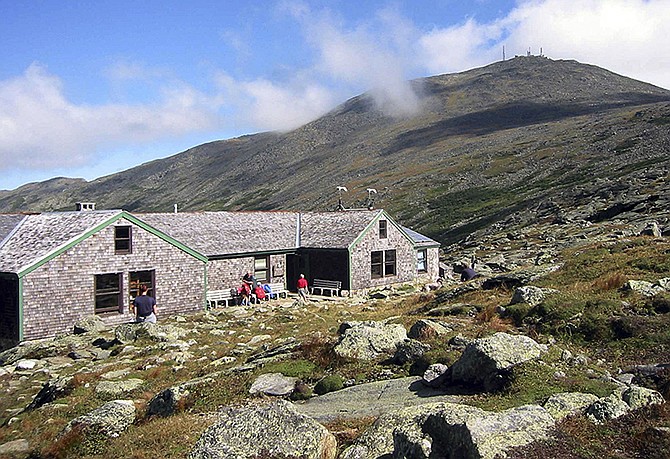CONCORD, N.H. (AP) - More than five decades since a backcountry hut for hikers was last built in New Hampshire's White Mountains, a plan to put one less than 2 miles into the woods has stirred passions among some outdoor lovers who say the mountains are already overrun by wealthy out-of-staters who are trampling on a fragile part of the world and undermining the outdoor experience.
The Appalachian Mountain Club proposed building "Sparkling Cascade" - a place for hikers to get some rest, a hot meal and a bunk to crash on for the night - in a section of Crawford Notch. The club says it would be close enough to the main road that people who might not ordinarily get into the mountains could more easily experience it - older people, youngsters on their first hikes or just newbies.
The new addition would also be between two existing huts that are 14 miles apart, allowing a hiker to put together a hut-to-hut experience at shorter mileage. That would be particularly useful in winter when the conditions in the White Mountains are especially unpredictable and the days are shorter.
A trail would also connect to the Appalachian Trail, the 2,189-mile footpath that attracts hundreds of thru-hikers each year traveling from Georgia to Maine.
"We want to be sure that the connection to the outdoors that we know and love is available to a wide range of people," said Paul Cunha, the vice president of outdoor operations for the 140-year-old nonprofit, told the Associated Press.
The first hut - Madison Spring - was built in 1888 in the northern Presidential range, where the peaks tower above 5,000 feet. There are now eight AMC huts in the White Mountains, the most recent - Mizpah Spring Hut in the southern Presidential range - was built as the backpacking craze took off in the 1960s. Since then, use has tripled and the huts are often at capacity.
The huts are anything but simple lean-tos. They offer some comforts and shelter from the elements, plus warmth and camaraderie. Some huts provide cooked meals, others cook-your-own self-service. All of them are free of the trappings of life back home; there are no TVs and cell service is spotty, if it exists at all. The average rate is $60 a night, but prices can go above $100 - a price some critics say keeps them out of reach for too many.
Sparkling Cascade would accommodate 50 any given night plus crew members. A clearing would be created to allow a helicopter to drop in supplies, and a parking lot would be built at the trailhead to accommodate 30 to 50 vehicles.
The proposal was first disclosed this past summer and has led to opposition from hikers and lovers of the outdoors who contend the region is already overcrowded, ruining the experience, causing harm to a treasured environment and commercializing this part of the world.
In response to the public's comments, the AMC is now rethinking the proposal and is evaluating other locations, Cunha told the AP. It's too soon to say it's off the table but, he said, "we're looking for a variety of options to mitigate those concerns." He anticipates getting out in the field in the spring and having a revised plan to make public by fall.
Chris Magness, a guide with the International Mountain Climbing School in North Conway, was upset when he heard about the plan and felt it was being considered without the public knowing much about it. So he circulated a petition to draw attention to it, nearly 1,000 people have signed so far.
"Crawford Notch is very unique," he said. "It's rugged. It's beautiful. It's sacred to a lot of people who use the outdoors. ... I'd like future generations to have the same experiences I've had."
Dozens of letters sent to state officials underscore a division. Those who favor it see it as a chance to introduce the outdoors to those who might otherwise consider the mountains inaccessible.
Mark Dindorf, the chairman of the board of selectman for Hart's Location, the community within Crawford Notch, considers the hut a chance to expose more people to the outdoors he grew to love since he scaled his first peak in the Whites when he was 5.
Though he's concerned the proposed location would encroach on a boreal forest area, overall he believes a new hut would be beneficial.
"This isn't a huge, sprawling development ... and it's in keeping with history and tradition," said Dindorf, whose wife works for the AMC.
Still others see it as encroaching on a rugged wilderness that stretches over 1,250 square miles. Laura Waterman, the Vermont-based author of "Forest and Crag" with her now-late husband Guy Waterman weighed in with a typewritten letter of her own.
"Once the hut is built the character of the place will change and those woods will never be the same again," she wrote. "I see the hut proposal only damaging our beloved mountains and the wild spirit hikers seek."

